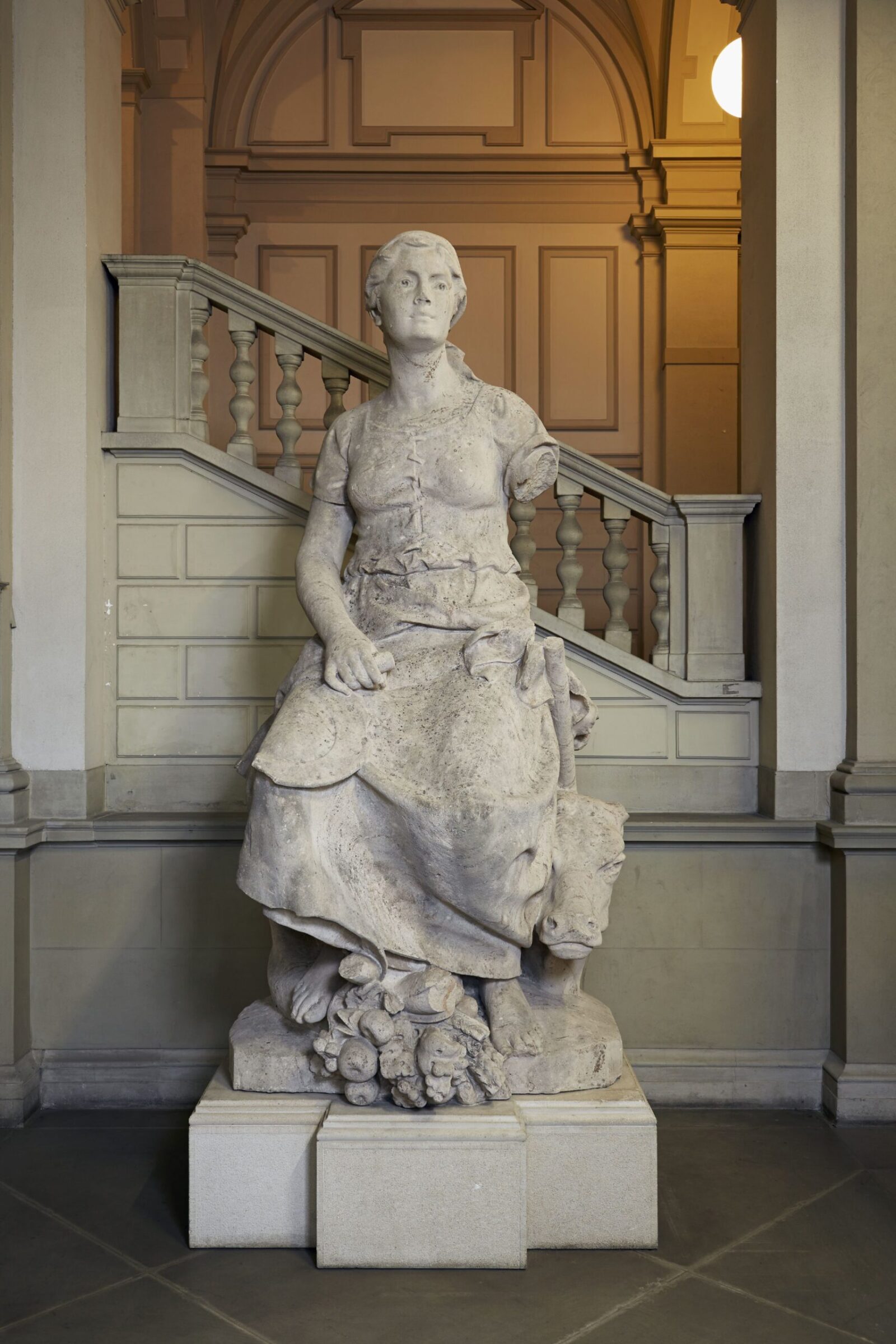Sickle, bull’s head and tree trunk
A statue that symbolises the discipline of agriculture and forestry
Created for the four large niches on what was the main façade of the Swiss Federal Polytechnic, the four allegorical female figures represent the institute’s areas of academic focus in 1896. One of the statues is dedicated to agriculture and forestry, a field of study that had formed part of the institute’s range of courses since 1871.
In November 1892, the Swiss Federal Art Committee launched a contest with the aim of “obtaining designs for statues to go in the four niches in the main façade of the building, designed by Semper for that purpose”. These four statues, which the architect Gottfried Semper had envisaged as part of his original plans, were to “embody the principal disciplines offered at the Polytechnic” – architecture, engineering, science, and agriculture and forestry. This was how the Federal School of Agriculture and Forestry, which had been founded some 20 years earlier through an expansion of the forestry school (see the post How it all began in 1871), came to have its own allegorical statue.
A sickle, bull’s head and tree trunk
Paris-based sculptor Natale Albisetti, originally from Stabio, Ticino, provided everything the jury was looking for in his entry. He proposed four allegorical female figures with attributes symbolising each of the four disciplines. The statue depicting agriculture and forestry chimed with the tastes of the time: the female figure appears in peasant dress, complete with a headscarf and a waistcoat laced at the front. With a sickle in her right hand, a bull’s head (without horns) to the left of her feet, and sitting on a tree trunk, she represents the various disciplines taught at the agriculture and forestry school: agriculture, animal husbandry and forestry. The brimming horn of plenty beneath her right foot is a throwback to ancient iconography, as a symbol of fertility associated with well-run agriculture.
Too big for the façade
Between September 1894 and 1920, the statue, made of the porous limestone typical of the Savonnières region in eastern France, stood alongside three other female statues in the niches of the façade facing the city, as can be seen in photographs from that period. Unlike the Art Committee, the management committee in charge of the buildings some 30 years later saw the figures as out of keeping with the architecture. In 1920, as part of correspondence relating to the restoration of Semper’s building, the order was given to remove the statues from their niches “as they do not fit with the architectural scale of the façade”.

Today, the four statues have taken up residence in the main building. In the western entrance hall, agriculture and forestry stands to the left of the stairs and Architecture to the right, while engineering and science can be found in the entrance hall off Rämistrasse (beside the stairs leading down to the underground car park).

